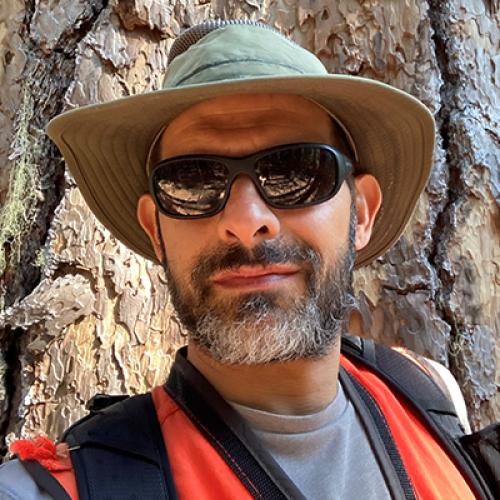
Zald, Harold
Position Type:
Faculty
Job Title:
Courtesy Faculty
Department:
Forest Engineering, Resources & Management
Office Location:
322 FSL
Email:
Advising:
Graduate Major Advisor
Research Interests
- Disturbance Ecology
- Fire Ecology
- Forest Management
- Landscape Ecology
- Remote Sensing
Research Statement: I use field measurements, tree-rings, and remotely sensed imagery to inventory and monitor forest ecosystems, and understand how they respond to disturbance agents, management activities, and climate change. My broad mission is to conduct applied research to develop forest inventory and monitoring methods, assist forest management decision-making, and inform land management policy.
Bio
My research focuses on: Integrating field and remotely sensed data to generate spatial predictions of forest composition, structure, and change; Ecology and management of Sierra Nevada mixed-conifer forests with emphasis on responses to climate change, alterations of natural disturbance regimes, and ecosystem restoration; Tree Invasion of mountain meadows in response to climate change; Responses of large old trees to long-term climate change and short-term drought events; and The role of complex terrain and diverse ecosystem configurations in mediating resilience of forests to disturbance agents and climate stressors.
Selected Publications:
- Perret DL, Bell DM, Gray AN, Shaw JD, Zald HSJ. (2023). Range-wide population assessments for subalpine fir indicate widespread disturbance-driven decline. Forest Ecology and Management, 542.
- Dudney J, Latimer AM, van Mantgem P, Zald HSJ, Willing CE, Nesmith JCB, Cribbs J, Milano E. (2023). The energy–water limitation threshold explains divergent drought responses in tree growth, needle length, and stable isotope ratios. Global Change Biology, 00, 1– 15.
- Zald HSJ, Callahan CC, Hurteau MD, Goodwin MJ, North MP. (2022). Tree growth responses to extreme drought after mechanical thinning and prescribed fire in a Sierra Nevada mixed-conifer forest, USA. Forest Ecology and Management 510: 120107.
- Zald HSJ, Dunn CD. (2018). Disentangling drivers of wildfire severity in a multi-owner forest landscape, Oregon USA. Ecological Applications 28: 1068-1080.
- Zald HSJ, Wulder MA, White JC, Hilker T, Hermosilla T, Hobart GW, Coops NC. (2016). Integrating Landsat pixel composites and change metrics with lidar plots to predictively map forest structure and aboveground biomass in Saskatchewan, Canada. Remote Sensing of Environment 176:188-201.